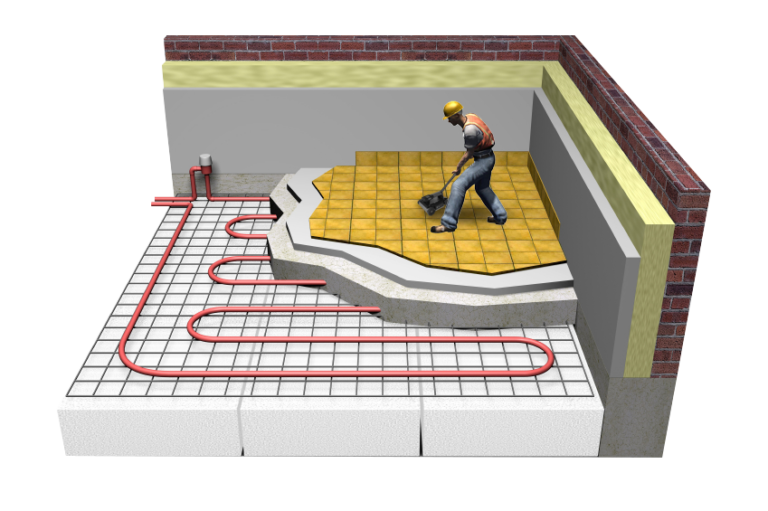RainierGPR Concrete Scanning: Accuracy and Safety And Security for Building And Construction Projects
RainierGPR Concrete Scanning: Accuracy and Safety And Security for Building And Construction Projects
Blog Article
Checking Out the Secret Advantages of Concrete Scanning in Construction Projects
In the realm of contemporary building and construction practices, the use of concrete scanning modern technology has emerged as a crucial tool for making sure task efficiency and structural stability. From boosting safety steps to properly discovering energies concealed beneath the surface, the benefits of concrete scanning are complex. RainierGPR Concrete Scanning.
Boosted Safety Steps
Making use of advanced concrete scanning technology enhances precaution on construction websites by giving exact discovery of prospective dangers concealed underneath the surface. This technology allows construction teams to identify rebar, avenues, post-tension wires, and various other blockages prior to excavation or exploration, dramatically lowering the threat of accidents. By determining these components exactly, workers can avoid destructive critical architectural parts, hence protecting against injuries, hold-ups, and expensive repair work.
Additionally, concrete scanning plays a crucial role in making certain the integrity of existing frameworks throughout developments or improvements. By identifying weak points, voids, or wear and tear within concrete aspects, engineers can attend to these issues proactively, boosting the general safety and security and durability of the structure. This positive approach not only mitigates the danger of architectural failures yet likewise decreases the capacity for crashes triggered by unpredicted architectural deficiencies.
Essentially, the application of concrete scanning modern technology acts as an aggressive safety and security procedure that safeguards both building employees and the structural honesty of buildings, eventually contributing to the total success and effectiveness of building and construction jobs. - RainierGPR Concrete Scanning
Accurate Discovery of Utilities
Concrete scanning modern technology assists in precise recognition of underground utilities, enhancing building and construction site safety and security and efficiency. Exact detection of energies is crucial in building tasks to stop pricey problems, project delays, and most notably, guarantee the safety and security of employees and the public. By utilizing sophisticated scanning modern technologies such as ground-penetrating radar (GPR) and electro-magnetic induction, building and construction groups can draw up the location of buried pipes, cable televisions, and various other energies with high degrees of precision.

Time and Price Effectiveness

Concrete scanning modern technology enables building and construction groups to accurately find rebar, post-tension wires, and other embedded items within concrete frameworks. This specific information helps in preventing expensive blunders such as accidental damage to important components throughout drilling, cutting, or coring activities. Furthermore, by determining possible threats beforehand, the need for costly repair services or remodel as a result of problems can be decreased, leading to cost savings for the project.
Moreover, the capability to swiftly and accurately detect energies under the surface area without triggering any kind of damages not just conserves time but also avoids pricey disruptions to existing facilities. In general, the moment and cost performance advantages of concrete scanning make it an indispensable tool for enhancing construction project monitoring and implementation.
Conservation of Architectural Stability
Preserving the structural honesty of structures and facilities is critical in guaranteeing long-term security and security. Concrete scanning plays a vital function in this preservation procedure by enabling construction specialists to recognize prospective threats to the architectural stability of a structure or facilities before they rise into major concerns. Through the use of innovative scanning technologies such as ground-penetrating radar (GPR) and electro-magnetic induction, building teams can non-invasively examine the condition of concrete frameworks, locate rebar, post-tension wires, and other ingrained aspects, and recognize any type of voids, fractures, or wear and tear within the concrete.
Improved Task Planning
In order to make certain the effective implementation of building jobs, precise blog here attention to detail and comprehensive planning are important components that stem from a comprehensive understanding of the architectural problems determined through concrete scanning. Inevitably, including concrete scanning right into the job planning stage boosts sychronisation among group members, fosters aggressive analytic, and contributes to the successful distribution of building jobs within budget and timetable restraints.
Final Thought
In conclusion, concrete scanning supplies many advantages in construction tasks. By improving precaution, properly discovering utilities, boosting time and cost performance, protecting architectural integrity, and assisting in job planning, concrete scanning verifies to be a necessary tool for successful job execution. Its capability to mitigate dangers, increase effectiveness, and make certain job honesty makes it a crucial possession for building and construction professionals.
In the world of modern-day construction techniques, the utilization of concrete scanning innovation has actually emerged find more as a critical device for ensuring job performance and structural integrity.Concrete scanning modern technology enables building groups to properly locate rebar, post-tension cords, and various other ingrained objects within concrete structures. With the usage of innovative scanning technologies such as ground-penetrating radar (GPR) and electromagnetic induction, building groups can non-invasively assess the condition of concrete structures, locate rebar, post-tension cords, and various other embedded elements, and determine any type of gaps, cracks, or damage within the concrete.
In order to make sure the effective implementation of construction jobs, thorough focus to detail and extensive preparation are crucial components that stem from an extensive understanding of the structural conditions identified through concrete scanning. Ultimately, incorporating concrete scanning into the job planning stage boosts sychronisation among group members, cultivates positive problem-solving, and contributes to the successful distribution of building and construction tasks within spending plan and routine restrictions.
Report this page